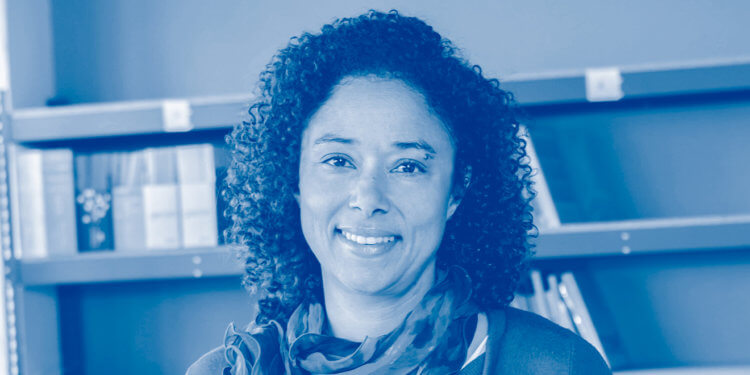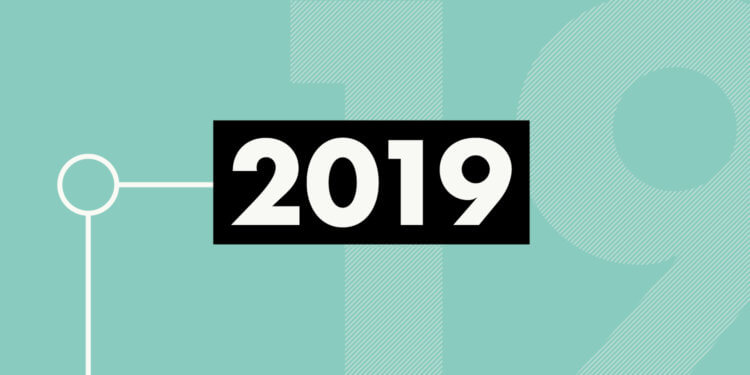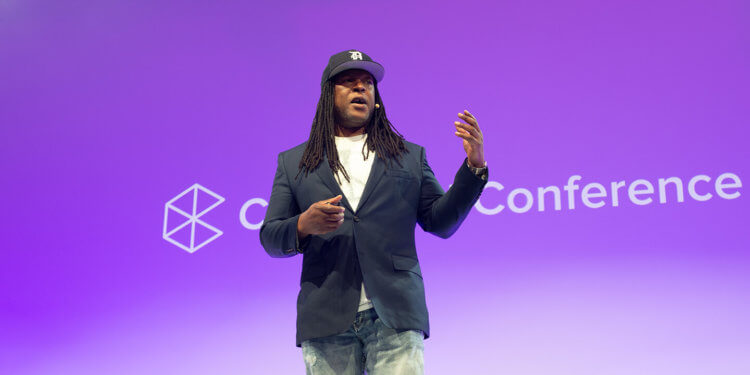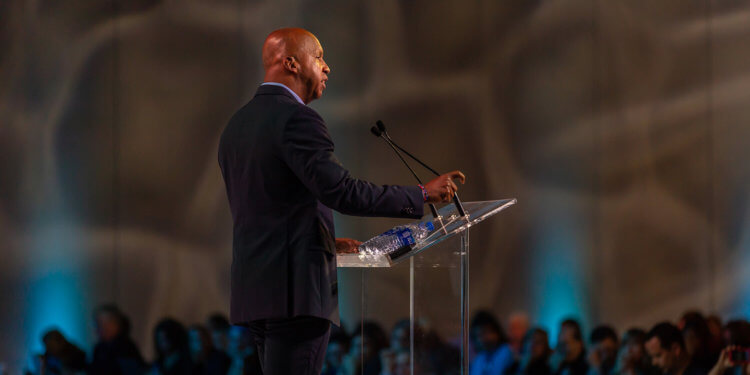

About the episode:
How do we move past “an eye for an eye” in a way that benefits and honors communities and victims? And what role do physical spaces have to play in better justice solutions?
In this episode, Deanna Van Buren—an award-winning architect, activist for criminal justice reform, and Keynote Speaker from the 2019 Clio Cloud Conference—joins us for an in-depth discussion on restorative justice, and the role legal professionals can play in transforming the justice system.
The Design Director and Executive Director of Designing Justice + Designing Spaces—an architecture and real estate development firm that is building the infrastructure to end mass incarceration—Deanna shares the lessons she’s learned about punishment and justice with the Matters team.
Our Guests:

Deanna Van Buren
Deanna Van Buren is the Design Director and Executive Director of Designing Justice + Designing Spaces. A pioneering activist, Deanna has been recognized internationally for her leadership in using architecture, design, and real estate innovations to address the social inequities behind the mass incarceration crisis. Her 2017 TEDWomen talk on what a world without prisons could look like has been viewed more than one million times, and she is the only architect to have been awarded the Rauschenberg Artist as Activist fellowship.
Host bios:

Teresa Matich
Teresa Matich is the Content Strategist at Clio, where she’s responsible for educating the legal industry on market trends, best practices, and important issues impacting law firms. In her spare time, she enjoys traveling, snowboarding, and traveling to snowboard. Email her at [email protected] or tweet her at @TeresaMatich.

Andrew Booth
Andrew Booth is the technical producer for Matters, and works within the Business Operations department at Clio as the Learning Media Specialist. He is best known as the voice (and sometimes face) of Clio’s training videos. Andrew received his Broadcast Communications degree from BCIT, and has produced work for such broadcasting outlets as Global News and Roundhouse Radio. Email him at [email protected].

Derek Bolen
Derek Bolen is the Senior Manager of Customer Marketing at Clio, which means he gets paid to build relationships with the greatest customers in the world. When he isn’t working, he’s tweeting, reading, writing, podcasting, running, obsessing over fantasy football, or hanging out with his 5 year old son. Email him at [email protected], or tweet him at @hurrrdurrr.

Sam Rosenthal
Sam Rosenthal is a Content Strategist for Clio, specializing in thought leadership and creative content. A graduate of UNC-Chapel Hill’s journalism program, Sam works on literary fiction and screenwriting projects in his spare time. Email him at [email protected], or tweet him at @SamRoseWrites.
Show notes:
- Introduction: Matters producer Teresa Matich introduces Deanna Van Buren, and some of the key topics to be discussed during the episode.
- Deanna talks about what inspired her to become an architect and activist.
- Deanna describes what restorative justice is, and why it works better than incarceration. Deanna recalls some of the powerful stories she’s witnessed during her work in restorative justice.
- Deanna talks about how she uses design and architecture to create positive change in communities.
- Deanna discusses the role lawyers and legal professionals can play in furthering restorative justice, and combatting mass incarceration.
- Deanna describes some of her experiences working with lawyers in the criminal justice space.
- Closing
Transcript
Read full transcript
Teresa: How do we move past “an eye for an eye” in a way that benefits and honors communities and victims? And what role do physical spaces have to play in better justice solutions?
I’m Teresa Matich, and this is Matters.
Matters is a podcast presented by Clio, the world’s leading cloud-based legal technology provider, where we look at small changes that can make a big impact on lawyers’ daily lives and practices.
Today’s episode is the second in our two-part series on criminal justice reform, and why it matters.
I interviewed Deanna Van Buren, the Design Director and Executive Director of Designing Justice + Designing Spaces—an architecture and real estate development firm that is building the infrastructure to end mass incarceration.
A pioneering activist, Deanna has been recognized internationally for her leadership in using architecture, design, and real estate innovations to address the social inequities behind the mass incarceration crisis. Her 2017 TEDWomen talk on what a world without prisons could look like has been viewed more than one million times, and she is the only architect to have been awarded the Rauschenberg Artist as Activist fellowship.
When we spoke, Deanna introduced us to the concept of “restorative justice”; explained why it achieves better outcomes than imprisonment; and how she uses her skills as an architect to create real change in communities. She also discussed how important lawyers are in furthering the aims of restorative justice, and why she believes legal professionals have incredible power—and an incredible opportunity—to change our justice system.
Deanna: My name’s Deanna Van Buren. I’m the Design Director and Executive Director of Designing Justice + Designing Spaces. We’re an architecture and real estate development firm that is building the infrastructure to end mass incarceration.
Teresa: Right. And what inspired that vision of yours to end mass incarceration? And I’ve also heard you say you dream of a world without prisons, potentially even.
Deanna: Yeah, yeah. I mean, I think the original inspiration came from spending a hot sweaty day in church on Martin Luther King Jr’s birthday in West Oakland at the Taylor Memorial Methodist Church. I remember the name. And I heard activists Angela Davis and Fanya Davis speak about restorative justice. And, since a young person, I had been taught that that justice was something that was not for us. And that had been my lived experience. And so to hear about restorative justice, that it was a thing that was based on an entirely different set of values and systems, became for me, the thing I … And who knows why that resonated so deeply, but it felt real, like a solution. And I committed myself at that point to designing for it.
Teresa: Right. Absolutely. And for those who weren’t able to join us for a your talk this morning, what is restorative justice?
Deanna: Yeah. Restorative justice is a philosophy that says, when a crime has been committed, it is a breach of relationship, or a harm. And that the needs of the victim have to be addressed as the primary step to take. And that those who’ve committed the offense are obligated to make amends. They are accountable for those actions. And so it looks like peacemaking circles, family group conferences, truth and reconciliation chords, processes where they both come together to address the offense rather than lawyers. No lawyers, no judges, none of those things are involved.
Teresa: Yeah, absolutely. And that’s really interesting what you say about making amends, because there’s maybe this concept, what one of our other speakers talked about this morning, of walking up and throwing away the key, but a lot of the people that you’ve met actually really want to make amends for what they’ve done.
Deanna: Yeah. Yeah. I mean I think that what we’re finding is that restorative justice actually works best in cases of severe violence, and that survivors of violence prefer restorative justice to incarceration because they actually feel safer. They know these folks are coming back to their community. There are also issues of retribution. “Oh, you sent my brother to jail or prison and now I’m going to get you.” So there’s just… It’s actually a safer… Everyone’s like, “Oh, you know, incarceration makes us safe.” Incarceration doesn’t make us safe.
Teresa: Yeah.
Deanna: Restorative justice repair makes us safe, and they know that. And they want a chance to be seen and heard, and our current justice system does not allow for that.
Teresa: Yeah. It’s amazing the power of creating these spaces and just giving people a space to talk it out, to know that they’re on the same page.
Deanna: Sure. Yeah. Yeah.
Teresa: So a key part of your process is working with people and teaching them design, and working with designers who are incarcerated themselves. Why is that so important to your process?
Deanna: So architecture as a discipline has been kept out of our hands since the dawn of time. We have no agency around our built environment. Yes, we breathe in it, we live in it, we love in it, we work in it, we sleep in it, and we have no agency. So it’s very important that people reclaim that part of their lives. And so we work with people really deeply around design to teach them the tools that I know so they can have agency in their built environment, and use it as a tool to support their emotional and physical health and wellness. It’s very important that we reclaim it, and we democratize design. And so that is part of why we do what we do.
Teresa: And are there any stories that stick with you from that work? I know you told a really inspiring one this morning.
Deanna: Oh my God, there’s so many stories. Seeing people engage in it. Particularly when I did a workshop for both the mobile refuge rooms with like, I think there were only maybe 40 students there. And I did a similar workshop with a nonprofit delivering services around the bus, and we did full-scale mock-ups. So these aren’t little models. We did full-size models of these things. And I always think, “Okay guys, like here’s a knife, here’s some glue guns, here’s how you do it.” And then they just run off and they go crazy. They’re ripping it, and sticking knives in things, and ripping up a cloth and building stuff.
Deanna: I don’t even have to do anything. I just need to get out of the way. It’s like some feeding frenzy of creativity that is always a surprise. It shows you how desperate people are for some creative practice in their lives. Especially when it’s for their own thing, for their own project.
Teresa: Yeah, and you talked about the importance of control and traumatized environments.
Deanna: Yes.
Teresa: And there’s trauma on both sides of the equation.
Deanna: Always. Always. Yeah. And so, control of your environment, both at a systemic level. Like, “I’m going to go to the planning committee and the planning commission and advocate. I don’t want that sewage treatment plant in my neighborhood.” That’s one way to have control. And then at the scale of a room, I need to be able to leave the room easily. I need to be able to slide my chair, which is, I like things on casters, to get away from you.
Deanna: I need to be able open a window and make myself feel cooler. I need to be able to turn a light on. These are really simple things that they find that when people have control over their environment, they have much less stress. Much less stress.
Teresa: Absolutely. That makes a lot of sense.
Deanna: Yeah.
Teresa: What’s been your most unexpected learning from working with either people who are incarcerated, or the communities that you work with to try to bring more restorative justice?
Deanna: I mean, two of the things I mentioned today have been most surprising to me. A: The fact that people process trauma this way. That was a shocker. I never … When people started crying in my design studios—which happens all the time—when they started doing that. I was like, “What do I do now? What’s happening here?” And I was seeing, what I was understanding, is that the process of imagining things, the space, it helps people to process that.
Deanna: So that was a big surprise. And then the other big surprise was how hard it is for people to get past the things that they know. And the way that that process helps them do that, and how long it takes. I spent a whole week of working with incarcerated men at San Quentin, and they kept trying to re-design a prison. Like, no, that’s not what we’re talking about. And it took them a while before they started to break open, and then to watch them sort of break out of this thinking about what this is, is magical. They’re like, “Oh, we could be this.” I’m like, “Now you got it, now you’re going.”
Teresa: So there’s even a relearning that needs to happen before you can take that control.
Deanna: Yeah. Yeah. You really… I tell you, this whole time, people have always been like, “Oh, so you’re designing better prisons?” I’m like, “No, I’m saying we don’t do them.” They’re like, “That doesn’t compute in my mind.” They can’t get it … It’s amazing. I will even say it and they’ll still repeat like, “So it’s the better version.” Like, “No—we don’t do them!”
Deanna: So that’s just how … It shows you how conditioned we are, and then how creativity helps us break out of that conditioning.
Teresa: Yeah, absolutely. And that’s a really important part of design thinking, is like framing the problem and what lens you look at it through. How has design theory reduced recidivism, whether through your efforts or through other efforts that you’ve seen?
Deanna: Yeah. People love this question. Like, “How is your work reducing recidivism?” Recidivism is a super complicated, multifaceted thing to analyze and code. And space and environment, in terms of the actual analytics and data around that, doesn’t really exist.
Deanna: What we know, though, is that if people don’t have anywhere to live, this is just a basic physical situation, if people don’t have any way to get to their probation officer, if they don’t have any way to get to a job, if there’s nowhere they can have jobs. And so it’s the place, the policies, the programs, and the infrastructure that we build is going to be able to facilitate people not going back to prison.
Deanna: So, Restore Oakland is a restaurant. It’s a ride on public transportation. It’s training people to do things. It’s a place- and a program-based approach. It’s going to help with that. How many numbers? Who knows? But if people aren’t homeless, they’re also not going to go back. So you build homes for them. You make places where they can succeed in their program. If I’m in transitional housing, my chances of recidivism are probably pretty high. The six month thing that Shaka talked about.
Deanna: Our hope is that the projects we’ve created, these rooms for them that are comforting and provide privacy and help them psychologically, will help them complete their programs and not recidivate. And that the environment, detoxifying the environment, is going to help with that.
Teresa: Okay. And similarly to how we talked about how you see people crying and processing trauma in this way and this amazing impact that it has, even when you get people thinking about different solutions …
Deanna: Yeah, haven’t even built anything yet.
Teresa: Yeah. How’s it feel when you see the Peacemaking Center, or the Center for Restorative Justice in Oakland in action, and you see people using those spaces and getting something they’ve never had before? How’s that for you?
Deanna: Yeah, that’s a great question. No one’s ever asked me that question. I wish they would. It makes me—that’s when I start crying. That’s when I get super emotional. It is the most powerful moment for an architect. I don’t care what kind of architect you are, to walk into something that was in your head and then it’s there in real space and time, and you’re in it and you’re watching people interact with it and they love it, and they’re enjoying it. It’s the greatest reward … It’s very emotional, and I will literally sit there for hours just watching the people enjoy the space. I could do it all day long.
Teresa: That’s so cool. Is there any story of anyone who used one of these centers for the first time that really sticks with you?
Deanna: Yeah, there’s a story that, it’s happened with a few people where, let’s take the vehicle. It’s just a bus. It’s a bus, it’s a classroom, it’s a beautiful space for learning. And this has happened to many students. They’ll come, they’ll look on the bus, they’ll poke their head in and be like, “Ohhh.” And then they’ll leave. They want to go back out again. And then they come back. Just to watch them come out, like, “Can I come in here?” They’re like, “Yeah, you can come in here.” And they come in, and they sit down in the back in the lounge and they are … They don’t leave. They don’t leave.
Teresa: That’s amazing. Can you tell our listeners a bit about the popup villages and how they work?
Deanna: Yeah, so the popup village has been a long complex project that that, it turns out, works. That’s the crazy thing about it, is that it’s providing a place for people to come together and be with each other. To build social capital, and not just social wealth. And so, it’s been an adventure as an architect to now also have an operations team. I had to hire a community liaison. We did the whole thing. So all the assets, all the architecture, all of the people who set it up, break it down.
Deanna: And we’re working with a formerly incarcerated man, Tyrone Mullins, who started his own firm. And he’s becoming our operations lead. So, he kind of pours his heart and soul into setting it up. We’re there with our folks. We have an MC who, he’s my community liaison, and we sort of, we program it. So the whole time there’s things going—there’s food demos, and there’s dance performances, and there’s DJs, and all of it is supported by our infrastructure. And people get pissed off if the thing doesn’t come every month. They’re like, “Where is it?” I was like, “We’ll come next month. I promise.”
Teresa: That’s amazing how people get used to it that quickly, though.
Deanna: They get used to it. It does take a little time. And now we’re starting to work with bigger institutions. Like USCSF, which is our local university and medical place, to create a pregnancy village. So it’s going to be for pregnant women. We are working with Bridge Housing, which is one of the country’s largest nonprofit housing developers, so that we pop up in their housing project to bring people from mixed incomes together. So, how do we create environments where we have folks who are low income and folks who are making a ton of money? How do you break that barrier, too? So it’s an incredible tool that seems to be expanding.
Teresa: That’s great. Wonderful to hear. So we are at a conference for lawyers. So I have to ask: How can lawyers play a role in making restorative justice more widespread and broad spread? Is there a role for them to play?
Deanna: A huge role. I mean, half of the restorative justice practitioners I work with used to be lawyers, or they are still lawyers. Lawyers have incredible power to change the way we do justice. I mean, I can’t think of anyone who has more power to do that, than them. Many of our community organizing partners are movement lawyers … I’m actually in service to lawyers a lot of the time, who are really trying to push the agenda. And we’re using space with them to help them do that. So lawyers can fight, they can sue the city. Like, “You can’t build that jail because you didn’t follow your own process, you didn’t engage people in imagining it.”
Deanna: And you can slow it down, you can shut them down, and you can get restorative justice implemented into your cities by working with the DA’s office, prosecutors. They’re the ones who have to bring it. You’re like, “Yes. So I do want restorative justice. Yes. I do want another tool as a prosecutor, so I don’t just have to send people to jail.” Or the judges I know, there are a bunch of judges I know who are also like, “Yeah, I want more tools.” And restorative justice is a powerful tool, but they don’t have to keep sending people back.
Teresa: That’s so cool. And, I mean, how can lawyers use the principles and design thinking concepts that you use as an architect? You use them to design spaces, but they can use them to design a better experience for the clients that they’re working with.
Deanna: They can, yeah. So I’ve done some workshops with lawyers around collaborative law practice, which is a form of divorce and family law. And we did a great process with them. It was an all day workshop with them where we helped them think through the client experience. We drew the client experience. We had cards and tools to help them understand what their values were. When your client comes, they want to know what you care about, and you need to show that in the environment.
Deanna: So there are a lot of things that we learned, and I wrote an article called Peace in Place, with a lawyer and a psychologist that was in the collaborative law review. It’s on our website where we wrote out this intersectionality of that and what they can do to help improve the experience of folks coming into their processes.
Teresa: That’s interesting, because the whole client, you talked about the client experience, and that’s often so much bigger than even like the small part that a lawyer might engage with somebody as part of their—
Deanna: Yeah, yeah, yeah. Yeah.
Teresa: Journey with justice.
Deanna: That’s right. Hospitality is part of that.
Teresa: Yeah.
Deanna: Welcoming them. How do you do that? Do you have your degrees on the wall? Take them down. There’s a lot of simple things that can be done so you don’t intimidate people. Now some people do want to see the degrees because that’s how they know they’re going to pay you the high hourly rates, but you have to locate it. But you want people to feel comfortable. You want people to feel at home.
Teresa: Yeah.
Deanna: And welcome.
Teresa: Do you get a lot of resistance to the lawyers you work with? Or I guess they’re volunteering to sign up …
Deanna: Yeah, I mean some I do. But most of the time, if you’re encountering me you probably already agree with me or you’re open to the idea of it. Most of the lawyers I work with are pretty activist in their orientation. And then with the collaborative law practitioners, they’re already doing something a little differently anyway. So it wasn’t hard to get … I mean, our class was full. But it’s new for them.
Teresa: Very cool. What advice do you have for a lawyer who might be listening to this and thinking, “Oh, I want to do that. I want to look at the client experience and see if I can make things better for my community and my clients”?
Deanna: I mean, you could certainly use the tools that we have. My website has lots of them. We have the tool kit itself, we have all of these resources on the website that they can just look at to use. They can read the article … It’s really simple and helpful to do. I mean, I would also—I met with some lawyers and a judge the other day in New York and went to their spaces that they’re using. They’re actually now bringing restorative justice to all of New York city’s workers. It’s a big initiative. And I met with him and he just decided, “I’m going to start doing this in my practice. I’m going to start using restorative justice and mediation in what I do.”
Deanna: And so it’s pretty easy to get training in it, and then try to implement it in small ways, and maybe even designate space in the environment that you’re in for just that kind of thing. And so you set in a small way, you don’t have to do it all the time, but lawyers are really well poised to get trained to do it, and then begin to implement it in their space in some way.
Teresa: Excellent.
Deanna: And try stuff out. I’m always about starting small, iterating quickly. That’s a design principle. Try small things, get feedback from your clients. Like, “What did you think?” “I’m doing this? Do you like that?” And be honest. Try a survey. So just be checking in with them and then keep repeating and trying new things all the time. And trust yourself. Intuitively trust yourself.
Deanna: You know what spaces make you feel good. You do it in your home.
Teresa: Yeah.
Deanna: Just try things.
Teresa: Yeah. It doesn’t have to be scary, it sounds like.
Deanna: No, it doesn’t at all. It doesn’t at all. I mean simple stuff I talked about today, like nature in the environment. When you go to choose an office, think about the experience of someone parking their car and coming into your place. Is it confusing? Is it disorientating? Do I know where I am? Do you have a view to a brick wall, or do you have a view to something that will help people be able to modulate their nervous system? If not, let’s get some plants in this space. Let’s get some art that represents that. There’s different strategies that make it pretty easy. It’s not hard, anyone can buy plants.
Teresa: Yeah. That’s really …
Deanna: That’s just one of many things that you can think about as people come in.
Teresa: Well that’s really powerful advice and something that’s definitely accessible for many people.
Deanna: It’s all very accessible. Especially, I mean, lawyers don’t get paid nothing. I mean some don’t, but they have the money to be able to invest in it. And I’m like, “If you all don’t do it, who’s going to do it?” So try.
Teresa: Absolutely. I just have one or two more questions left, because we only have a few minutes. But I’m curious, when you meet people who are maybe not on board with your vision of restorative justice or a world without prisons and they think, “No, I think I’ll feel safest if people are in prison.” They don’t really believe in this more community-collaborative approach. What do you say to convince them otherwise?
Deanna: I usually just tell them the facts. I just state the data, usually. But after, ask them, why do you think that? Why do you think that this is a good approach? And often what you hear is like, “Well, they did something wrong.” Or, “I did something wrong.” Or, “They should be punished.” And I’m like, “Well, why is that, and what does punishment really look like? Don’t they have a sort of obligation to repair what they’ve done? Wouldn’t it be the person who has been harmed who should really say that? I mean if you were harmed, what would you want?”
Deanna: And it’s just a conversation that gets us to a different place. Because actually, people prefer this. Actually, when people do restore justice, they don’t violently re-offend. If you go to prison, not the case. Those are just the facts. That’s what is happening. So it usually is helpful. And often I get pushback, mostly from communities of color who, low income communities of color, who are like, they’ve got some scary people in their lives that they are like, “I don’t want that person around.” I get that.
Teresa: Yeah.
Deanna: You’re talking to them about that, as necessary.
Teresa: But it sounds like you use the same principles of this peacemaking. Ask them why, create a safe space for a conversation …
Deanna: Exactly.
Teresa: Yeah.
Deanna: It’s much better that way. Because I totally get it. I totally get that this is a massive cultural and paradigm shift we’re talking about. It’s a huge thing. We’ve had it this way since the beginning.
Teresa: Yeah.
Deanna: Punishment, retribution, eye for an eye. These are really clear values about how justice gets dealt. But it’s not working.
Teresa: No. But I think the vision that you have is really inspiring.
Deanna: Thank you.
Teresa: And I think hopefully we will get there one day.
Deanna: Yeah, we will. I’m absolutely convinced we will.
Teresa: Wonderful.
Deanna: Absolutely convinced.
Teresa: Thank you for joining me today, Deanna.
Deanna: Thank you all. Yeah. It was fun. It was fun.
Teresa: Thank you for listening to Matters. For more episodes, visit our home page, clio.com/podcast. And don’t forget to subscribe to the podcast on iTunes or Spotify, so you never miss an episode.
Matters is produced by Andrew Booth, Sam Rosenthal, Teresa Matich, and Derek Bolen—and by Clio, the world’s leading cloud-based legal technology provider.
If you’d like to learn more about Clio, please visit us at Clio.com


